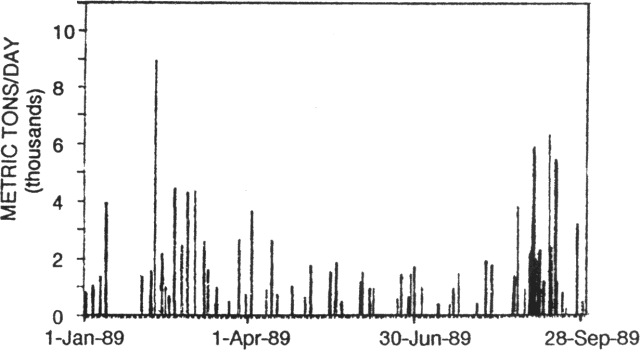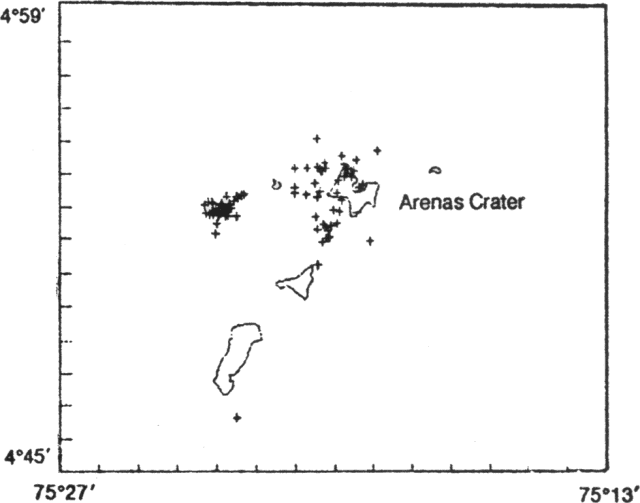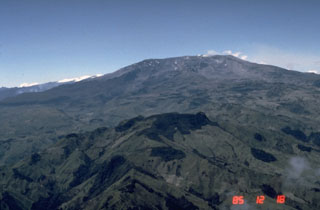Report on Nevado del Ruiz (Colombia) — September 1989
Scientific Event Alert Network Bulletin, vol. 14, no. 9 (September 1989)
Managing Editor: Lindsay McClelland.
Nevado del Ruiz (Colombia) Small ash ejections; continued strong seismicity
Please cite this report as:
Global Volcanism Program, 1989. Report on Nevado del Ruiz (Colombia) (McClelland, L., ed.). Scientific Event Alert Network Bulletin, 14:9. Smithsonian Institution. https://doi.org/10.5479/si.GVP.SEAN198909-351020
Nevado del Ruiz
Colombia
4.892°N, 75.324°W; summit elev. 5279 m
All times are local (unless otherwise noted)
Tephra ejections continued in September, with ashfalls reported on the 2nd, 3rd, 11th, 12th, 14th, and 17th. SO2 flux averaged 2,625 t/d, with 14 measurements ranging from 218-6,384 t/d (figure 33). Similar increases have followed previous eruptive episodes.
 |
Figure 33. Daily SO2 emissions measured by COSPEC at Ruiz, 1 January-28 September 1989. Courtesy of the Observatorio Vulcanológico de Colombia. |
Although the number of A-type events increased in September, the number of B-type shocks decreased from August values. Most September epicenters fell along a roughly NE-SW trend (figure 34). Several events were felt on the volcano. Seismic energy release was highest on 14 September when a swarm of A-type events occurred, centered on the W part of the summit. dry-tilt measurements showed deflation, while electronic tilt measurements showed no significant changes.
 |
Figure 34. Epicenters of 97 high-frequency earthquakes near Ruiz in September 1989. Courtesy of the Observatorio Vulcanológico de Colombia. |
Geological Summary. Nevado del Ruiz is a broad, glacier-covered volcano in central Colombia that covers more than 200 km2. Three major edifices, composed of andesitic and dacitic lavas and andesitic pyroclastics, have been constructed since the beginning of the Pleistocene. The modern cone consists of a broad cluster of lava domes built within the caldera of an older edifice. The 1-km-wide, 240-m-deep Arenas crater occupies the summit. The prominent La Olleta pyroclastic cone located on the SW flank may also have been active in historical time. Steep headwalls of massive landslides cut the flanks. Melting of its summit icecap during historical eruptions, which date back to the 16th century, has resulted in devastating lahars, including one in 1985 that was South America's deadliest eruption.
Information Contacts: C. Carvajal, INGEOMINAS, Manizales.

